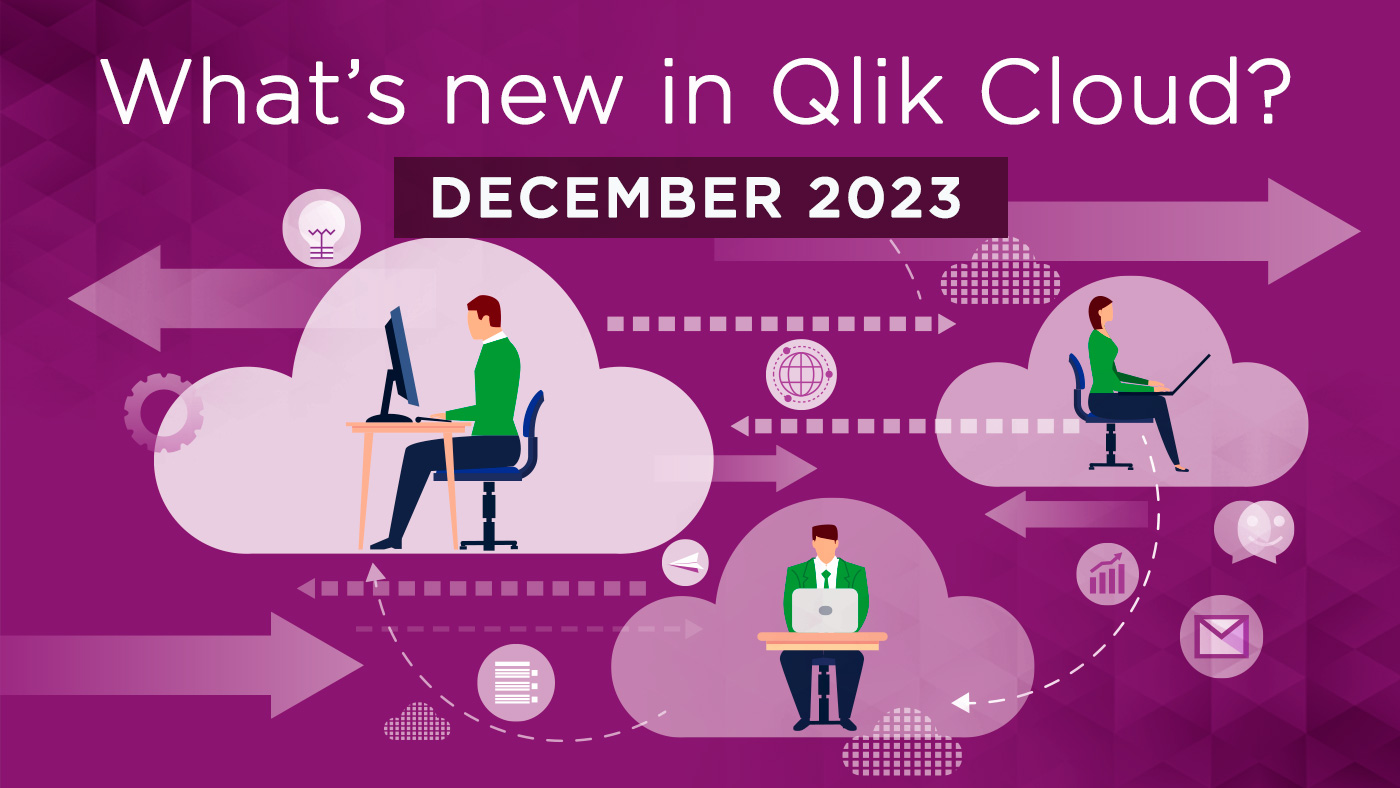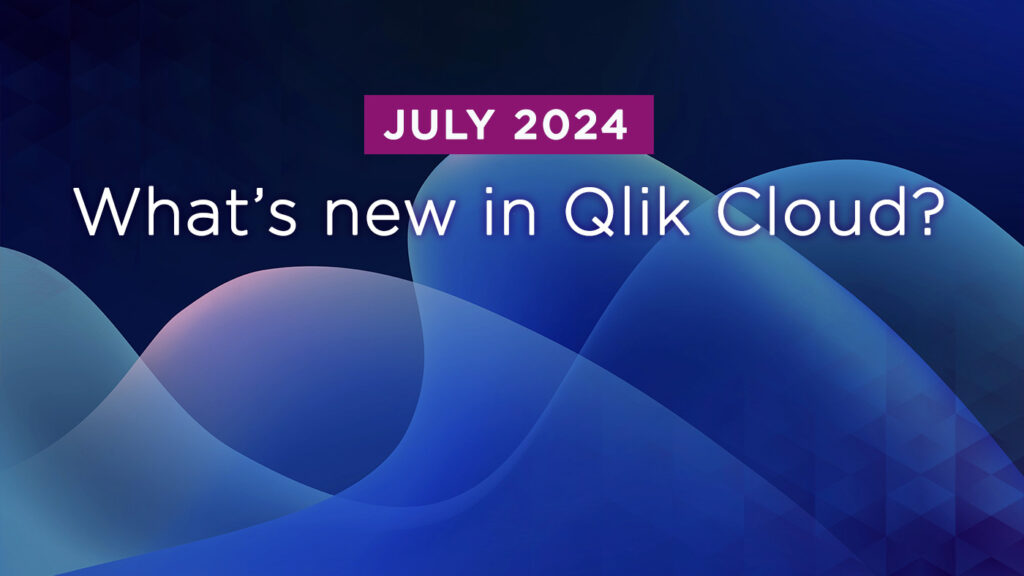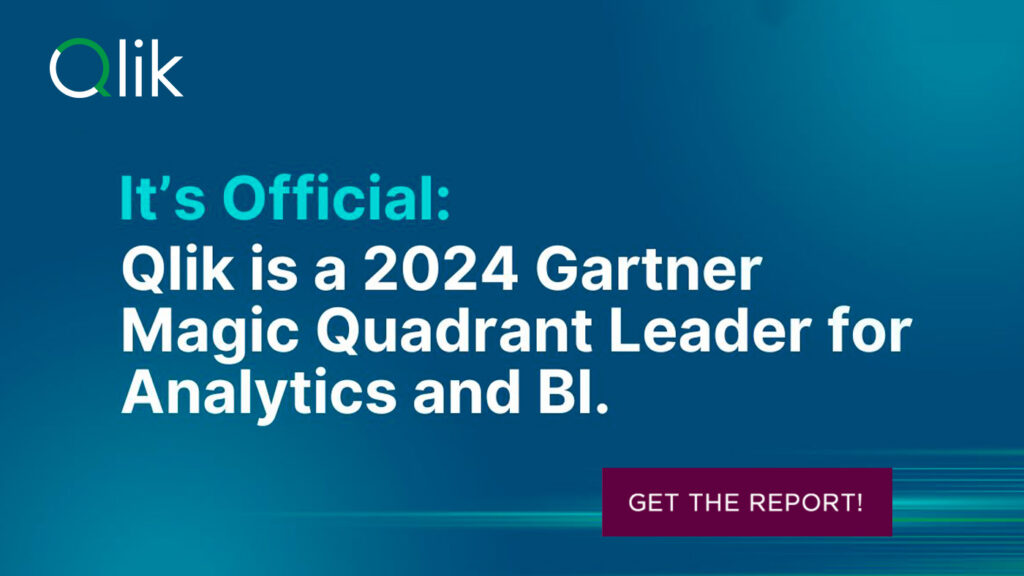
What’s New in Qlik Cloud
– December 2023 Updates –
Welcome to the final “What’s New in Qlik Cloud” blog for 2023. In this latest blog Roger Gray, Senior BI Consultant, and Mark James, Data Integration Consultant, at Climber will provide you with the latest and greatest enhancements to the Qlik Cloud platform.
Data Analytics
Christmas has come early with some great features we have been waiting for. The most notable are the first three items in the features list. Will this enable the remaining QlikView and NPrinting users to migrate to Qlik Cloud? The Layout Container enables the overlay of chart objects instantly enhancing the look and feel of an analytics app. Tabular Reporting integrates to Excel to create templates that are both stylish and capable of showing all rows in a table, regardless of the length. And finally, integration to Microsoft Teams where the Qlik app can be asked questions through Teams Chat.
1. Visualisation: Layout Container
A new addition to the Dashboard bundle, the Layout container, empowers users to place charts in a freeform manner with or without a snapping grid. This versatile container is particularly useful for grouping charts, combining them into new visualisations, creating composite KPIs, and designing aesthetically pleasing dashboards.
2. Reporting: Qlik Cloud Tabular Reporting
Qlik Cloud Analytics now introduces the capability for tabular reporting, addressing common, centrally managed report distribution requirements. Report developers can create custom, highly formatted XLS documents directly from Qlik data and visualisations. Governed Report Tasks ensure reports are efficiently distributed to stakeholders, making the Qlik platform the primary source for operational decisions and customer communications.
3. Actionable Insights: Introducing Qlik Conversational Analytics in Microsoft Teams
A new Qlik app for Microsoft Teams brings conversational analytics to the forefront. Users can now chat with Insight Advisor, Qlik’s intelligent AI assistant, within Microsoft Teams. This integration enables users to explore data using natural language, ask questions, and receive AI-generated data visualisations and insights, promoting real-time collaboration.
4. Visualisation: New Pivot Table
Say hello to the new Pivot table, loaded with a range of features designed based on user feedback. This new Pivot table is set to replace the native pivot, with additional features planned for the upcoming year.
The Pivot table, part of the Visualisation bundle, includes:
- Dimension Headers: Providing a clear structure to your data
- Null Value Customisation: Symbol, foreground, and background colour options for null values
- Styling Options: Grid styling, font styling, totals styling, column width options, and more
- Interactive Sorting: Enhancing user interaction with dimensions
5. Visualisation: Styling For Grid, Funnel, Sankey Charts, and Filter Pane
The Grid chart, Funnel chart, and Sankey chart receive a styling upgrade with a new property panel. This includes general settings for title, subtitle, background, border, shadow, and chart-specific settings for axis and value labels. These enhancements provide users with greater control over the aesthetics of their visualisations.
The Filter pane now offers additional properties for styling, allowing users to customise general settings such as title font styling, background, border, and shadow. Chart-specific styling includes header and content font styling, colour settings for selection state, background colour, and image.
6. AI: Added Support for Amazon Bedrock
Qlik enhances its analytics capabilities by adding support for Amazon Bedrock. Users can now select and connect to foundational Large Language Models (LLMs) hosted by BedRock, Amazon’s fully managed service. This capability opens avenues for augmenting analytics with natural language insights, synthesising third-party data, and allowing real-time questions using data from Qlik.
7. Visualisation: New Text Object Extension
A new flexible text object extension is introduced via the Dashboard bundle. Users can now style text with advanced settings, add measures and insert tables, providing enhanced flexibility in creating dynamic and informative dashboards.
8. Development: Data Preparation in the Hub
Qlik introduces a game-changing feature for data preparation by allowing users to create Qlik scripts directly from the hub. Equipped with an improved script editor, users can build and deploy Qlik scripts upstream of analytics apps. The editor now includes a data preview feature, offering better insight during script development. This update sets the stage for future enhancements to analytics data preparation capabilities.
9. Administration: New User Role – Embedded Analytics User
For customers embedding Qlik Analytics for end-users, a new embedded user role is introduced. This role restricts users to accessing only the analytics app within Qlik Cloud, enhancing security in embedded scenarios.
10. Administration: OAuth – Limiting Access by Scopes
Customers can now set access control for Qlik Cloud OAuth clients, providing the ability to regulate permissions and enhance security. The new capability allows customers to assign scopes to OAuth clients, controlling the permissible capabilities and actions of end-users. Existing OAuth clients maintain backward compatibility with default scopes, while new clients require scope selection.

Data Integration
The developments this month focus on additional supported SaaS applications as data sources, enhancements to bring Qlik Cloud Data Integration and the Talend Data Integration offering closer together, and further new supported data target platforms. Here is a breakdown of some of the key additions in detail.
1. Additional SaaS Application Connectors
There is ongoing development around the breadth of connectors available within the Qlik Cloud Data Integration (QCDI) platform. These are all released as Generally Available (GA). This month’s enhancements focus on Supply Chain, ERP, CRM, and Finance applications, such as:
- Acumatica ERP
- GitHub
- QuickBooks
- SAP Ariba
- SAP Cloud for Customer
- SAP Fieldglass
- SAP SuccessFactors Payroll
- Stripe
- Zoho Books
- Zoho CRM
- Zoho Expense
- Zoho Inventory
2. Registering Data Loaded by Stitch
Stitch is an application as part of the Talend Data Fabric, which can be used to extract data from a wide range of sources and land data into a chosen target. As part of the QCDI platform, users can now load registered data into a QCDI pipeline, which has come from a Stich integration project. This brings the benefit of the transformation capabilities of QCDI to datasets already replicated as part of a Stich project.
3. Support for three new Replication Targets in Qlik Cloud Data Integration
The range of options for data targets as part of a QCDI project has now expanded to include:
- MySQL: On Premises, Amazon RDS, Google Cloud, and Microsoft Azure
- PostgreSQL: On Premises, Google Cloud, and Microsoft Azure
- Oracle: On Premises
This greatly enhances the current supported data targets, and offers customers and prospects a wider choice of on-premise and cloud based data targets.
4. Qlik Cloud Data Integration: Replication and Lake Landing Support
QCDI now introduces another use case as part of the Data Integration platform, alongside its existing Data Warehouse automation offering. The new Replication use case supports real-time data replication from supported data sources to a supported target. As part of this first release, with more to come in due course, the first target to support replicating data in real time, is Microsoft SQL Server, with support for the On Premises, Amazon RDS, Google Cloud, and Microsoft Azure versions. This, in effect, brings the Qlik Replicate capability into QCDI, where users do not need the capability to transform data before landing into a target platform.
In addition to support for a SQL Server based relational database, Replication Projects can also now support landing data in a Data Lake with the addition of the new “Land Data in Data Lake” task. Data can then be delivered as full load and change data in the form of CSV, JSON, or PARQUET formatted files. In this first release, the first target supported for Lake Landing in real time is Amazon S3, but more supported options are due to follow.
5. Qlik Application Automation: OpenAI Chat Automation block
The new Chat Completion block on the OpenAI connector in Qlik Application Automation brings support for OpenAI’s GPT models, which users can run prompts against. These blocks can be used when distributing email reports for generating custom AI generated messages which are tailored to the intended recipient, alongside KPIs taken from the corresponding Qlik App or Dashboard.
6. Qlik Application Automation: Amazon Bedrock Connector
The Amazon Bedrock connector in Qlik Application Automation enables your automation to interact with any of the text and image models from Bedrock and send the model’s output to any other automation connector or use it as input for another Bedrock model. You can for example use the text models to process support incidents from tools like ServiceNow or Salesforce and generate tailored responses which you can then provide to your support team by writing them back to the respective support tool or sending them directly to your support team over Slack or Microsoft Teams.

Conclusion
In conclusion, Qlik’s recent updates and features demonstrate their commitment to improving data management and analysis capabilities. Whether you are focused on data integration, error handling, or analytics, these enhancements offer valuable tools and capabilities to help you make the most of your data. Stay tuned for further updates and innovations from Qlik as they continue to shape the data analytics and integration landscape.
WANT TO KNOW MORE? CONTACT US!
Roger Gray
BI Manager
roger.gray@climberbi.co.uk
+44 203 858 0668
Tom Cotterill
BI Consultant
tom.cotterill@climberbi.co.uk
+44 203 858 0668
News archive

What’s New in Qlik Cloud – July 2024
This month’s updates in Qlik Cloud include Context Menu for Visualisations and On-Demand Tabular Reporting to mention a few. In the Data Integration area, the updates focus on improving the performance and reliability of data replication processes. Read on to learn more about the new additions in July.
>> Read more
What was new at Qlik Connect?
A couple of weeks after returning home from Qlik Connect in Orlando, it’s time to summarise all the impressions from the conference. Our BI Manager and Qlik Partner Ambassador Olof Malmström shares the highlights.
>> Read more
Qlik a Leader in the 2024 Gartner Magic Quadrant for Data Analytics and Business Intelligence
Get your free copy for an overview of the entire Data Analytics and BI landscape and see why Qlik is recognised as a Leader in the Magic Quadrant for 14 years straight.
>> Download the report
